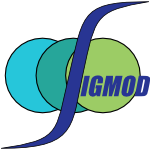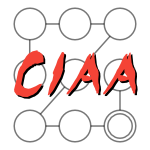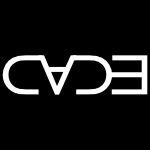101 papers:
 ICML-2015-PachecoS #approach #pseudo
ICML-2015-PachecoS #approach #pseudo- Proteins, Particles, and Pseudo-Max-Marginals: A Submodular Approach (JP, EBS), pp. 2200–2208.
 DAC-2014-XueQBYT #analysis #framework #manycore #scalability
DAC-2014-XueQBYT #analysis #framework #manycore #scalability- Disease Diagnosis-on-a-Chip: Large Scale Networks-on-Chip based Multicore Platform for Protein Folding Analysis (YX, ZQ, PB, FY, CYT), p. 6.
 ICML-c1-2014-ZhouT #generative #network #predict #probability
ICML-c1-2014-ZhouT #generative #network #predict #probability- Deep Supervised and Convolutional Generative Stochastic Network for Protein Secondary Structure Prediction (JZ, OGT), pp. 745–753.
 ICML-c2-2014-McGibbonRSKP #comprehension #markov #modelling
ICML-c2-2014-McGibbonRSKP #comprehension #markov #modelling- Understanding Protein Dynamics with L1-Regularized Reversible Hidden Markov Models (RM, BR, MS, GK, VSP), pp. 1197–1205.
 ICPR-2014-GienTCL #fuzzy #learning #multi #predict
ICPR-2014-GienTCL #fuzzy #learning #multi #predict- Dual Fuzzy Hypergraph Regularized Multi-label Learning for Protein Subcellular Location Prediction (JG, YYT, CLPC, YL), pp. 512–516.
 ICPR-2014-OkadaFWP #analysis #random
ICPR-2014-OkadaFWP #analysis #random- Microenvironment-Based Protein Function Analysis by Random Forest (KO, LF, MW, DP), pp. 3138–3143.
 MLDM-2014-WangLK #concurrent #data mining #mining
MLDM-2014-WangLK #concurrent #data mining #mining- Applications of Concurrent Sequential Patterns in Protein Data Mining (CW, JL, MK), pp. 243–257.
 SIGMOD-2013-LapeineHHG #data analysis #interactive #mobile #query
SIGMOD-2013-LapeineHHG #data analysis #interactive #mobile #query- Mobile interaction and query optimizationin a protein-ligand data analysis system (ML, KGH, EH, NMG), pp. 1291–1292.
 KDD-2013-TabeiKKY #constraints #scalability #similarity
KDD-2013-TabeiKKY #constraints #scalability #similarity- Succinct interval-splitting tree for scalable similarity search of compound-protein pairs with property constraints (YT, AK, MK, YY), pp. 176–184.
 SAC-2013-NardelliTB #behaviour
SAC-2013-NardelliTB #behaviour- Cross-lattice behavior of general ACO folding for proteins in the HP model (MN, LT, AB), pp. 1320–1327.
 ICPR-2012-CantoniOFP #analysis
ICPR-2012-CantoniOFP #analysis- Structural analysis of protein Secondary Structure by GHT (VC, OO, AF, AP), pp. 1767–1770.
 ICPR-2012-SuryantoJF #3d #image #multi #similarity #visualisation
ICPR-2012-SuryantoJF #3d #image #multi #similarity #visualisation- Protein structure similarity based on multi-view images generated from 3D molecular visualization (CHS, SJ, KF), pp. 3447–3451.
 KDD-2012-YuDRZY #classification #multi #predict
KDD-2012-YuDRZY #classification #multi #predict- Transductive multi-label ensemble classification for protein function prediction (GXY, CD, HR, GZ, ZY), pp. 1077–1085.
 KDIR-2012-BressoGDNS #3d #concept analysis #learning #relational
KDIR-2012-BressoGDNS #3d #concept analysis #learning #relational- Formal Concept Analysis for the Interpretation of Relational Learning Applied on 3D Protein-binding Sites (EB, RG, MDD, AN, MST), pp. 111–120.
 MLDM-2012-SinghCS #approach #hybrid #performance #recognition #using
MLDM-2012-SinghCS #approach #hybrid #performance #recognition #using- A Hybrid Approach to Increase the Performance of Protein Folding Recognition Using Support Vector Machines (LS, GC, DS), pp. 660–668.
 SAC-2012-MenorPB #kernel #predict #probability #using
SAC-2012-MenorPB #kernel #predict #probability #using- Probabilistic prediction of protein phosphorylation sites using kernel machines (MM, GP, KB), pp. 1393–1398.
 ICML-2011-PengHMU #set
ICML-2011-PengHMU #set- Convex Max-Product over Compact Sets for Protein Folding (JP, TH, DAM, RU), pp. 729–736.
 KDIR-2011-BicegoFBCM #grid #protocol
KDIR-2011-BicegoFBCM #grid #protocol- An Innovative Protocol for Comparing Protein Binding Sites via Atomic Grid Maps (MB, ADF, PB, AC, VM), pp. 413–422.
 SAC-2011-ChamorroDA #predict
SAC-2011-ChamorroDA #predict- Evolutionary computation for the prediction of secondary protein structures (AEMC, FD, JSAR), pp. 1082–1087.
 SAC-2011-TranCS #permutation #predict
SAC-2011-TranCS #permutation #predict- Prediction of permuted super-secondary structures in β-barrel proteins (VDT, PC, JMS), pp. 110–111.
 ICPR-2010-SakarKSG #clustering #feature model #predict
ICPR-2010-SakarKSG #clustering #feature model #predict- Prediction of Protein Sub-nuclear Location by Clustering mRMR Ensemble Feature Selection (COS, OK, HS, FG), pp. 2572–2575.
 KDIR-2010-CamposMO #random #recognition #using
KDIR-2010-CamposMO #random #recognition #using- Recognition of Gene/Protein Names using Conditional Random Fields (DC, SM, JLO), pp. 275–280.
 KDIR-2010-Molokov #combinator #identification
KDIR-2010-Molokov #combinator #identification- Application of Combinatorial Methods to Protein Identification in Peptide Mass Fingerprinting (LM), pp. 307–313.
 SAC-2010-AminBJ #framework #interactive #performance
SAC-2010-AminBJ #framework #interactive #performance- A cytoscape based framework for efficient sub-graph isomorphic protein-protein interaction motif lookup (MSA, AB, HMJ), pp. 1572–1576.
 HPDC-2010-HigdonLK #functional #modelling #sequence #similarity
HPDC-2010-HigdonLK #functional #modelling #sequence #similarity- Modeling sequence and function similarity between proteins for protein functional annotation (RH, BL, EK), pp. 499–502.
 ICLP-J-2010-PaluDFP #assembly
ICLP-J-2010-PaluDFP #assembly- CLP-based protein fragment assembly (ADP, AD, FF, EP), pp. 709–724.
 ICML-2009-KamisettyL #approach #assessment #quality
ICML-2009-KamisettyL #approach #assessment #quality- A Bayesian approach to protein model quality assessment (HK, CJL), pp. 481–488.
 KDIR-2009-PaquetV #2d #3d #multi #product line #realtime
KDIR-2009-PaquetV #2d #3d #multi #product line #realtime- Finding Protein Family Similarities in Real Time through Multiple 3D and 2D Representations, Indexing and Exhaustive Searching (EP, HLV), pp. 127–133.
 SIGIR-2009-YangGH #identification #information retrieval #problem
SIGIR-2009-YangGH #identification #information retrieval #problem- Protein identification as an information retrieval problem (YY, SG, AH), pp. 752–753.
 SAC-2009-CorderoVB #clustering #framework
SAC-2009-CorderoVB #clustering #framework- A new protein motif extraction framework based on constrained co-clustering (FC, AV, MB), pp. 776–781.
 SAC-2009-RekapalliHZ #identification #named #scalability
SAC-2009-RekapalliHZ #identification #named #scalability- HSP-HMMER: a tool for protein domain identification on a large scale (BR, CH, IBZ), pp. 766–770.
 CASE-2008-GeorgievA
CASE-2008-GeorgievA- Two-stage robotic crystal mounting of protein crystals for X-ray data collection (AG, PKA), pp. 1019–1024.
 CASE-2008-RussoMCK #automation #modelling #petri net
CASE-2008-RussoMCK #automation #modelling #petri net- Petri net modeling and automated system control of protein crystallization experimentation in drug discovery (MFR, SM, MHC, HK), pp. 906–911.
 VLDB-2008-PaquetV #database #named #perspective
VLDB-2008-PaquetV #database #named #perspective- Capri/MR: exploring protein databases from a structural and physicochemical point of view (EP, HLV), pp. 1504–1507.
 ICML-2008-AllauzenMT #kernel #predict #sequence
ICML-2008-AllauzenMT #kernel #predict #sequence- Sequence kernels for predicting protein essentiality (CA, MM, AT), pp. 9–16.
 ICPR-2008-KuksaHP #detection #kernel #performance
ICPR-2008-KuksaHP #detection #kernel #performance- Fast protein homology and fold detection with sparse spatial sample kernels (PPK, PHH, VP), pp. 1–4.
 SAC-2008-AntonyBHP #approach #biology #interactive #mining #using #validation
SAC-2008-AntonyBHP #approach #biology #interactive #mining #using #validation- Computational approach to biological validation of protein-protein interactions discovered using literature mining (AA, SB, SH, MJP), pp. 1302–1306.
 ICML-2007-BhattacharyaBC #classification #kernel
ICML-2007-BhattacharyaBC #classification #kernel- Structural alignment based kernels for protein structure classification (SB, CB, NRC), pp. 73–80.
 KDD-2007-PandeySGGK #case study #interactive #network #predict
KDD-2007-PandeySGGK #case study #interactive #network #predict- Association analysis-based transformations for protein interaction networks: a function prediction case study (GP, MS, RG, TG, VK), pp. 540–549.
 MLDM-2007-Kertesz-FarkasKP #classification #equivalence #learning
MLDM-2007-Kertesz-FarkasKP #classification #equivalence #learning- Equivalence Learning in Protein Classification (AKF, AK, SP), pp. 824–837.
 DLT-2006-PaunP
DLT-2006-PaunP- P Systems with Proteins on Membranes and Membrane Division (AP, BP), pp. 292–303.
 CIKM-2006-MarsoloPR #query #using
CIKM-2006-MarsoloPR #query #using- Structure-based querying of proteins using wavelets (KM, SP, KR), pp. 24–33.
 ICML-2006-EngelhardtJB #predict #visual notation
ICML-2006-EngelhardtJB #predict #visual notation- A graphical model for predicting protein molecular function (BEE, MIJ, SEB), pp. 297–304.
 ICPR-v1-2006-WenGL #clustering #detection #markov #monte carlo
ICPR-v1-2006-WenGL #clustering #detection #markov #monte carlo- Markov Chain Monte Carlo Data Association for Merge and Split Detection in Tracking Protein Clusters (QW, JG, KLP), pp. 1030–1033.
 ICPR-v3-2006-BaldacciGLR #approach #clustering
ICPR-v3-2006-BaldacciGLR #approach #clustering- A Template-Matching Approach for Protein Surface Clustering (LB, MG, AL, SR), pp. 340–343.
 ICPR-v3-2006-BouchaffraT #markov #recognition #using
ICPR-v3-2006-BouchaffraT #markov #recognition #using- Protein Fold Recognition using a Structural Hidden Markov Model (DB, JT), pp. 186–189.
 KDD-2006-ChenHLN #interactive #named #network
KDD-2006-ChenHLN #interactive #named #network- NeMoFinder: dissecting genome-wide protein-protein interactions with meso-scale network motifs (JC, WH, MLL, SKN), pp. 106–115.
 SAC-2006-ChenPSW
SAC-2006-ChenPSW- An integrated computational proteomics method to extract protein targets for Fanconi Anemia studies (JYC, SLP, CS, MW), pp. 173–179.
 SAC-2006-ChongL #using
SAC-2006-ChongL #using- An extension of dead end elimination for protein side-chain conformation using merge-decoupling (KFC, HWL), pp. 195–199.
 SAC-2006-CraigL #classification #learning #using
SAC-2006-CraigL #classification #learning #using- Protein classification using transductive learning on phylogenetic profiles (RAC, LL), pp. 161–166.
 SAC-2006-MerschmannP #approach #classification
SAC-2006-MerschmannP #approach #classification- A Bayesian approach for protein classification (LHdCM, AP), pp. 200–201.
 SAC-2006-PaluPHL #3d #approach #constraints #logic programming #scalability
SAC-2006-PaluPHL #3d #approach #constraints #logic programming #scalability- A constraint logic programming approach to 3D structure determination of large protein complexes (ADP, EP, JH, YL), pp. 131–136.
 SAC-2006-WuH #interactive #mining #network
SAC-2006-WuH #interactive #mining #network- Mining and analyzing the topological structure of protein-protein interaction networks (DDW, XH), pp. 185–189.
 SIGMOD-2005-MurphyF #database #image #research
SIGMOD-2005-MurphyF #database #image #research- Research issues in protein location image databases (RFM, CF), pp. 966–967.
 CIAA-J-2004-HanMZ05 #approach #automaton #database #sequence
CIAA-J-2004-HanMZ05 #approach #automaton #database #sequence- An automata approach to match gapped sequence tags against protein database (YH, BM, KZ), pp. 487–497.
 ICML-2005-IeWNL #adaptation #multi #recognition #using
ICML-2005-IeWNL #adaptation #multi #recognition #using- Multi-class protein fold recognition using adaptive codes (EI, JW, WSN, CSL), pp. 329–336.
 ICML-2005-LiuXC #graph #predict #using
ICML-2005-LiuXC #graph #predict #using- Predicting protein folds with structural repeats using a chain graph model (YL, EPX, JGC), pp. 513–520.
 ICML-2005-WangS #classification #kernel
ICML-2005-WangS #classification #kernel- New kernels for protein structural motif discovery and function classification (CW, SDS), pp. 940–947.
 MLDM-2005-KurganH #approach #feature model #predict #sequence
MLDM-2005-KurganH #approach #feature model #predict #sequence- Prediction of Secondary Protein Structure Content from Primary Sequence Alone — A Feature Selection Based Approach (LAK, LH), pp. 334–345.
 PPDP-2005-PaluDP #heuristic #optimisation #parallel #predict
PPDP-2005-PaluDP #heuristic #optimisation #parallel #predict- Heuristics, optimizations, and parallelism for protein structure prediction in CLP(FD) (ADP, AD, EP), pp. 230–241.
 SAC-2005-DalkilicS #analysis #design #evaluation
SAC-2005-DalkilicS #analysis #design #evaluation- Design and evaluation of CATPA: curation and alignment tool for protein analysis (MMD, AS), pp. 190–194.
 SAC-2005-DavidssonHS #predict #sequence
SAC-2005-DavidssonHS #predict #sequence- Comparing approaches to predict transmembrane domains in protein sequences (PD, JH, KS), pp. 185–189.
 SAC-2005-HuP #3d #complexity #parametricity
SAC-2005-HuP #3d #complexity #parametricity- Volume fractal dimensionality: a useful parameter for measuring the complexity of 3D protein spatial structures (MH, QP), pp. 172–176.
 SAC-2005-PlakeHL #interactive #optimisation #syntax
SAC-2005-PlakeHL #interactive #optimisation #syntax- Optimizing syntax patterns for discovering protein-protein interactions (CP, JH, UL), pp. 195–201.
 HPDC-2005-GrothMFWZM #empirical #using
HPDC-2005-GrothMFWZM #empirical #using- Recording and using provenance in a protein compressibility experiment (PTG, SM, WF, SCW, KPZ, LM), pp. 201–208.
 CIAA-2004-HanMZ #approach #automaton #database #sequence
CIAA-2004-HanMZ #approach #automaton #database #sequence- An Automata Approach to Match Gapped Sequence Tags Against Protein Database (YH, BM, KZ), pp. 167–177.
 ICALP-2004-FuW #algorithm
ICALP-2004-FuW #algorithm- A 2O(n1-(1/d)log n) Time Algorithm for d-Dimensional Protein Folding in the HP-Model (BF, WW), pp. 630–644.
 CIKM-2004-AghiliAA #geometry #using
CIKM-2004-AghiliAA #geometry #using- Protein structure alignment using geometrical features (SAA, DA, AEA), pp. 148–149.
 ICML-2004-ChuGW #predict #visual notation
ICML-2004-ChuGW #predict #visual notation- A graphical model for protein secondary structure prediction (WC, ZG, DLW).
 ICPR-v2-2004-ColleP #predict #process
ICPR-v2-2004-ColleP #predict #process- Relaxation Labeling Processes for Protein Secondary Structure Prediction (GC, MP), pp. 355–358.
 ICPR-v2-2004-VijayaMS #classification #clustering #performance #sequence
ICPR-v2-2004-VijayaMS #classification #clustering #performance #sequence- An Efficient Technique for Protein Sequence Clustering and Classification (PAV, MNM, DKS), pp. 447–450.
 SIGIR-2004-LiuCKG #predict
SIGIR-2004-LiuCKG #predict- Context sensitive vocabulary and its application in protein secondary structure prediction (YL, JGC, JKS, VG), pp. 538–539.
 SAC-2004-JiangWM #network #thread
SAC-2004-JiangWM #network #thread- Protein threading with residue-environment matching by artificial neural networks (NJ, WXW, IM), pp. 209–210.
 SAC-2004-WeisserK #identification #metric #sequence #statistics #using
SAC-2004-WeisserK #identification #metric #sequence #statistics #using- Identification of fundamental building blocks in protein sequences using statistical association measures (DKW, JKS), pp. 154–161.
 ICLP-2004-PaluDF #simulation
ICLP-2004-PaluDF #simulation- Protein Folding Simulation in CCP (ADP, AD, FF), pp. 452–453.
 ICEIS-v2-2003-VogiatzisFP #information management #predict
ICEIS-v2-2003-VogiatzisFP #information management #predict- The Protein Structure Prediction Module of the Prot-Grid Information System (DV, DF, GAP), pp. 372–378.
 KDD-2003-SheCWEGB #predict
KDD-2003-SheCWEGB #predict- Frequent-subsequence-based prediction of outer membrane proteins (RS, FC, KW, ME, JLG, FSLB), pp. 436–445.
 SAC-2003-CanWWS #3d #java #named #performance #using #visualisation
SAC-2003-CanWWS #3d #java #named #performance #using #visualisation- FPV: Fast Protein Visualization Using Java 3D (TC, YW, YFW, JS), pp. 88–95.
 SAC-2003-NgZT #approach #interactive
SAC-2003-NgZT #approach #interactive- Integrative Approach for Computationally Inferring Protein Domain Interactions (SKN, ZZ, SHT), pp. 115–121.
 SAC-2003-VulloF #approach #predict #recursion
SAC-2003-VulloF #approach #predict #recursion- A Recursive Connectionist Approach for Predicting Disulfide Connectivity in Proteins (AV, PF), pp. 67–71.
 ICLP-2003-BackofenW #approach #constraints #modelling #predict
ICLP-2003-BackofenW #approach #constraints #modelling #predict- A Constraint-Based Approach to Structure Prediction for Simplified Protein Models That Outperforms Other Existing Methods (RB, SW), pp. 49–71.
 VLDB-2002-HammelP #sequence
VLDB-2002-HammelP #sequence- Searching on the Secondary Structure of Protein Sequences (LH, JMP), pp. 634–645.
 ICPR-v2-2002-TaoIS
ICPR-v2-2002-TaoIS- Extracting Fractal Features for Analyzing Protein Structure (YT, TRI, JCS), pp. 482–485.
 SAC-2002-DinakarpandianK #predict #proximity
SAC-2002-DinakarpandianK #predict #proximity- BlOMIND-protein property prediction by property proximity profiles (DD, VK), pp. 168–172.
 MLDM-2001-MottlDSKM #classification #pattern matching #pattern recognition #recognition
MLDM-2001-MottlDSKM #classification #pattern matching #pattern recognition #recognition- Featureless Pattern Recognition in an Imaginary Hilbert Space and Its Application to Protein Fold Classification (VM, SD, OS, CAK, IBM), pp. 322–336.
 SAC-2001-DeermanLP #algorithm #predict #problem #search-based
SAC-2001-DeermanLP #algorithm #predict #problem #search-based- Linkage-learning genetic algorithm application to the protein structure prediction problem (KRD, GBL, RP), pp. 333–339.
 SAC-2001-Grigoriev #identification
SAC-2001-Grigoriev #identification- Computational structural genomics: identifying protein targets for structural studies (IVG), pp. 41–45.
 HPDC-2001-NatrajanFHGWCB #case study #experience #grid #using
HPDC-2001-NatrajanFHGWCB #case study #experience #grid #using- Studying Protein Folding on the Grid: Experiences Using CHARMM on NPACI Resources under Legion (AN, ADF, MAH, ASG, NWD, MC, CLBI), pp. 14–21.
 KDD-2000-KingKCD #data mining #functional #mining #predict #sequence #using
KDD-2000-KingKCD #data mining #functional #mining #predict #sequence #using- Genome scale prediction of protein functional class from sequence using data mining (RDK, AK, AC, LD), pp. 384–389.
 KDD-2000-WangMSW #biology #case study #classification #data mining #mining #network #sequence
KDD-2000-WangMSW #biology #case study #classification #data mining #mining #network #sequence- Application of neural networks to biological data mining: a case study in protein sequence classification (JTLW, QM, DS, CHW), pp. 305–309.
 ICALP-1999-Clote #markov
ICALP-1999-Clote #markov- Protein Folding, the Levinthal Paradox and Rapidly Mixing Markov Chains (PC), pp. 240–249.
 SIGMOD-1998-ChenWZ #query
SIGMOD-1998-ChenWZ #query- A Protein Patent Query System Powered By Kleisli (JC, LW, LZ), pp. 593–595.
 STOC-1998-CrescenziGPPY #complexity #on the
STOC-1998-CrescenziGPPY #complexity #on the- On the Complexity of Protein Folding (Extended Abstract) (PC, DG, CHP, AP, MY), pp. 597–603.
 SAC-1996-RamamurthyYG #generative #on the #parallel #scalability
SAC-1996-RamamurthyYG #generative #on the #parallel #scalability- On the scalability of parallel triplet generation for protein crystallography (SR, BWY, CG), pp. 344–352.
 STOC-1995-HartI #performance
STOC-1995-HartI #performance- Fast protein folding in the hydrophobic-hydrophilic model within three-eights of optimal (Extended Abstract) (WEH, SI), pp. 157–168.
 ICML-1995-CrawH #network #refinement
ICML-1995-CrawH #network #refinement- Protein Folding: Symbolic Refinement Competes with Neural Networks (SC, PH), pp. 133–141.
 KDD-1995-TsumotoT95a #automation #component #functional #representation #sequence #set
KDD-1995-TsumotoT95a #automation #component #functional #representation #sequence #set- Automated Discovery of Functional Components of Proteins from Amino-Acid Sequences Based on Rough Sets and Change of Representation (ST, HT), pp. 318–324.
 ICML-1994-AbeM #predict #probability
ICML-1994-AbeM #predict #probability- A New Method for Predicting Protein Secondary Structures Based on Stochastic Tree Grammars (NA, HM), pp. 3–11.
 CADE-1994-BaumgartnerF94a #interface #named #proving
CADE-1994-BaumgartnerF94a #interface #named #proving- PROTEIN: A PROver with a Theory Extension INterface (PB, UF), pp. 769–773.
 SEKE-1992-SubramaniamTHRR #design #information management #prototype #type system
SEKE-1992-SubramaniamTHRR #design #information management #prototype #type system- Knowledge Engineering for Protein Structure and Motifs: Design of a Prototype System (SS, DKT, KH, HR, LAR), pp. 420–435.
 ICLP-1986-RawlingsTNFS86 #prolog #using
ICLP-1986-RawlingsTNFS86 #prolog #using- Using Prolog to Represent and Reason about Protein Structure (CJR, WRT, JN, JF, MJES), pp. 536–543.
 ICML-2015-PachecoS #approach #pseudo
ICML-2015-PachecoS #approach #pseudo DAC-2014-XueQBYT #analysis #framework #manycore #scalability
DAC-2014-XueQBYT #analysis #framework #manycore #scalability ICML-c1-2014-ZhouT #generative #network #predict #probability
ICML-c1-2014-ZhouT #generative #network #predict #probability ICML-c2-2014-McGibbonRSKP #comprehension #markov #modelling
ICML-c2-2014-McGibbonRSKP #comprehension #markov #modelling ICPR-2014-GienTCL #fuzzy #learning #multi #predict
ICPR-2014-GienTCL #fuzzy #learning #multi #predict ICPR-2014-OkadaFWP #analysis #random
ICPR-2014-OkadaFWP #analysis #random MLDM-2014-WangLK #concurrent #data mining #mining
MLDM-2014-WangLK #concurrent #data mining #mining SIGMOD-2013-LapeineHHG #data analysis #interactive #mobile #query
SIGMOD-2013-LapeineHHG #data analysis #interactive #mobile #query KDD-2013-TabeiKKY #constraints #scalability #similarity
KDD-2013-TabeiKKY #constraints #scalability #similarity SAC-2013-NardelliTB #behaviour
SAC-2013-NardelliTB #behaviour ICPR-2012-CantoniOFP #analysis
ICPR-2012-CantoniOFP #analysis ICPR-2012-SuryantoJF #3d #image #multi #similarity #visualisation
ICPR-2012-SuryantoJF #3d #image #multi #similarity #visualisation KDD-2012-YuDRZY #classification #multi #predict
KDD-2012-YuDRZY #classification #multi #predict KDIR-2012-BressoGDNS #3d #concept analysis #learning #relational
KDIR-2012-BressoGDNS #3d #concept analysis #learning #relational MLDM-2012-SinghCS #approach #hybrid #performance #recognition #using
MLDM-2012-SinghCS #approach #hybrid #performance #recognition #using SAC-2012-MenorPB #kernel #predict #probability #using
SAC-2012-MenorPB #kernel #predict #probability #using ICML-2011-PengHMU #set
ICML-2011-PengHMU #set KDIR-2011-BicegoFBCM #grid #protocol
KDIR-2011-BicegoFBCM #grid #protocol SAC-2011-ChamorroDA #predict
SAC-2011-ChamorroDA #predict SAC-2011-TranCS #permutation #predict
SAC-2011-TranCS #permutation #predict ICPR-2010-SakarKSG #clustering #feature model #predict
ICPR-2010-SakarKSG #clustering #feature model #predict KDIR-2010-CamposMO #random #recognition #using
KDIR-2010-CamposMO #random #recognition #using KDIR-2010-Molokov #combinator #identification
KDIR-2010-Molokov #combinator #identification SAC-2010-AminBJ #framework #interactive #performance
SAC-2010-AminBJ #framework #interactive #performance HPDC-2010-HigdonLK #functional #modelling #sequence #similarity
HPDC-2010-HigdonLK #functional #modelling #sequence #similarity ICLP-J-2010-PaluDFP #assembly
ICLP-J-2010-PaluDFP #assembly ICML-2009-KamisettyL #approach #assessment #quality
ICML-2009-KamisettyL #approach #assessment #quality KDIR-2009-PaquetV #2d #3d #multi #product line #realtime
KDIR-2009-PaquetV #2d #3d #multi #product line #realtime SIGIR-2009-YangGH #identification #information retrieval #problem
SIGIR-2009-YangGH #identification #information retrieval #problem SAC-2009-CorderoVB #clustering #framework
SAC-2009-CorderoVB #clustering #framework SAC-2009-RekapalliHZ #identification #named #scalability
SAC-2009-RekapalliHZ #identification #named #scalability CASE-2008-GeorgievA
CASE-2008-GeorgievA CASE-2008-RussoMCK #automation #modelling #petri net
CASE-2008-RussoMCK #automation #modelling #petri net VLDB-2008-PaquetV #database #named #perspective
VLDB-2008-PaquetV #database #named #perspective ICML-2008-AllauzenMT #kernel #predict #sequence
ICML-2008-AllauzenMT #kernel #predict #sequence ICPR-2008-KuksaHP #detection #kernel #performance
ICPR-2008-KuksaHP #detection #kernel #performance SAC-2008-AntonyBHP #approach #biology #interactive #mining #using #validation
SAC-2008-AntonyBHP #approach #biology #interactive #mining #using #validation ICML-2007-BhattacharyaBC #classification #kernel
ICML-2007-BhattacharyaBC #classification #kernel KDD-2007-PandeySGGK #case study #interactive #network #predict
KDD-2007-PandeySGGK #case study #interactive #network #predict MLDM-2007-Kertesz-FarkasKP #classification #equivalence #learning
MLDM-2007-Kertesz-FarkasKP #classification #equivalence #learning DLT-2006-PaunP
DLT-2006-PaunP CIKM-2006-MarsoloPR #query #using
CIKM-2006-MarsoloPR #query #using ICML-2006-EngelhardtJB #predict #visual notation
ICML-2006-EngelhardtJB #predict #visual notation ICPR-v1-2006-WenGL #clustering #detection #markov #monte carlo
ICPR-v1-2006-WenGL #clustering #detection #markov #monte carlo ICPR-v3-2006-BaldacciGLR #approach #clustering
ICPR-v3-2006-BaldacciGLR #approach #clustering ICPR-v3-2006-BouchaffraT #markov #recognition #using
ICPR-v3-2006-BouchaffraT #markov #recognition #using KDD-2006-ChenHLN #interactive #named #network
KDD-2006-ChenHLN #interactive #named #network SAC-2006-ChenPSW
SAC-2006-ChenPSW SAC-2006-ChongL #using
SAC-2006-ChongL #using SAC-2006-CraigL #classification #learning #using
SAC-2006-CraigL #classification #learning #using SAC-2006-MerschmannP #approach #classification
SAC-2006-MerschmannP #approach #classification SAC-2006-PaluPHL #3d #approach #constraints #logic programming #scalability
SAC-2006-PaluPHL #3d #approach #constraints #logic programming #scalability SAC-2006-WuH #interactive #mining #network
SAC-2006-WuH #interactive #mining #network SIGMOD-2005-MurphyF #database #image #research
SIGMOD-2005-MurphyF #database #image #research CIAA-J-2004-HanMZ05 #approach #automaton #database #sequence
CIAA-J-2004-HanMZ05 #approach #automaton #database #sequence ICML-2005-IeWNL #adaptation #multi #recognition #using
ICML-2005-IeWNL #adaptation #multi #recognition #using ICML-2005-LiuXC #graph #predict #using
ICML-2005-LiuXC #graph #predict #using ICML-2005-WangS #classification #kernel
ICML-2005-WangS #classification #kernel MLDM-2005-KurganH #approach #feature model #predict #sequence
MLDM-2005-KurganH #approach #feature model #predict #sequence PPDP-2005-PaluDP #heuristic #optimisation #parallel #predict
PPDP-2005-PaluDP #heuristic #optimisation #parallel #predict SAC-2005-DalkilicS #analysis #design #evaluation
SAC-2005-DalkilicS #analysis #design #evaluation SAC-2005-DavidssonHS #predict #sequence
SAC-2005-DavidssonHS #predict #sequence SAC-2005-HuP #3d #complexity #parametricity
SAC-2005-HuP #3d #complexity #parametricity SAC-2005-PlakeHL #interactive #optimisation #syntax
SAC-2005-PlakeHL #interactive #optimisation #syntax HPDC-2005-GrothMFWZM #empirical #using
HPDC-2005-GrothMFWZM #empirical #using CIAA-2004-HanMZ #approach #automaton #database #sequence
CIAA-2004-HanMZ #approach #automaton #database #sequence ICALP-2004-FuW #algorithm
ICALP-2004-FuW #algorithm CIKM-2004-AghiliAA #geometry #using
CIKM-2004-AghiliAA #geometry #using ICML-2004-ChuGW #predict #visual notation
ICML-2004-ChuGW #predict #visual notation ICPR-v2-2004-ColleP #predict #process
ICPR-v2-2004-ColleP #predict #process ICPR-v2-2004-VijayaMS #classification #clustering #performance #sequence
ICPR-v2-2004-VijayaMS #classification #clustering #performance #sequence SIGIR-2004-LiuCKG #predict
SIGIR-2004-LiuCKG #predict SAC-2004-JiangWM #network #thread
SAC-2004-JiangWM #network #thread SAC-2004-WeisserK #identification #metric #sequence #statistics #using
SAC-2004-WeisserK #identification #metric #sequence #statistics #using ICLP-2004-PaluDF #simulation
ICLP-2004-PaluDF #simulation ICEIS-v2-2003-VogiatzisFP #information management #predict
ICEIS-v2-2003-VogiatzisFP #information management #predict KDD-2003-SheCWEGB #predict
KDD-2003-SheCWEGB #predict SAC-2003-CanWWS #3d #java #named #performance #using #visualisation
SAC-2003-CanWWS #3d #java #named #performance #using #visualisation SAC-2003-NgZT #approach #interactive
SAC-2003-NgZT #approach #interactive SAC-2003-VulloF #approach #predict #recursion
SAC-2003-VulloF #approach #predict #recursion ICLP-2003-BackofenW #approach #constraints #modelling #predict
ICLP-2003-BackofenW #approach #constraints #modelling #predict VLDB-2002-HammelP #sequence
VLDB-2002-HammelP #sequence ICPR-v2-2002-TaoIS
ICPR-v2-2002-TaoIS SAC-2002-DinakarpandianK #predict #proximity
SAC-2002-DinakarpandianK #predict #proximity MLDM-2001-MottlDSKM #classification #pattern matching #pattern recognition #recognition
MLDM-2001-MottlDSKM #classification #pattern matching #pattern recognition #recognition SAC-2001-DeermanLP #algorithm #predict #problem #search-based
SAC-2001-DeermanLP #algorithm #predict #problem #search-based SAC-2001-Grigoriev #identification
SAC-2001-Grigoriev #identification HPDC-2001-NatrajanFHGWCB #case study #experience #grid #using
HPDC-2001-NatrajanFHGWCB #case study #experience #grid #using KDD-2000-KingKCD #data mining #functional #mining #predict #sequence #using
KDD-2000-KingKCD #data mining #functional #mining #predict #sequence #using KDD-2000-WangMSW #biology #case study #classification #data mining #mining #network #sequence
KDD-2000-WangMSW #biology #case study #classification #data mining #mining #network #sequence ICALP-1999-Clote #markov
ICALP-1999-Clote #markov SIGMOD-1998-ChenWZ #query
SIGMOD-1998-ChenWZ #query STOC-1998-CrescenziGPPY #complexity #on the
STOC-1998-CrescenziGPPY #complexity #on the SAC-1996-RamamurthyYG #generative #on the #parallel #scalability
SAC-1996-RamamurthyYG #generative #on the #parallel #scalability STOC-1995-HartI #performance
STOC-1995-HartI #performance ICML-1995-CrawH #network #refinement
ICML-1995-CrawH #network #refinement KDD-1995-TsumotoT95a #automation #component #functional #representation #sequence #set
KDD-1995-TsumotoT95a #automation #component #functional #representation #sequence #set ICML-1994-AbeM #predict #probability
ICML-1994-AbeM #predict #probability CADE-1994-BaumgartnerF94a #interface #named #proving
CADE-1994-BaumgartnerF94a #interface #named #proving SEKE-1992-SubramaniamTHRR #design #information management #prototype #type system
SEKE-1992-SubramaniamTHRR #design #information management #prototype #type system ICLP-1986-RawlingsTNFS86 #prolog #using
ICLP-1986-RawlingsTNFS86 #prolog #using









